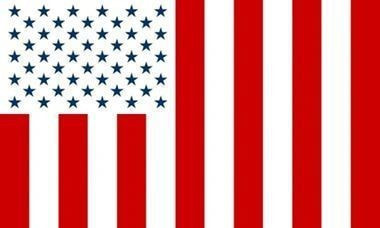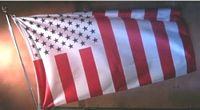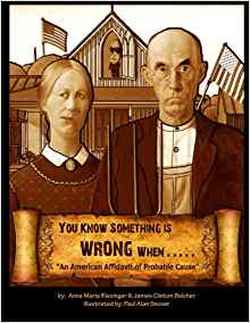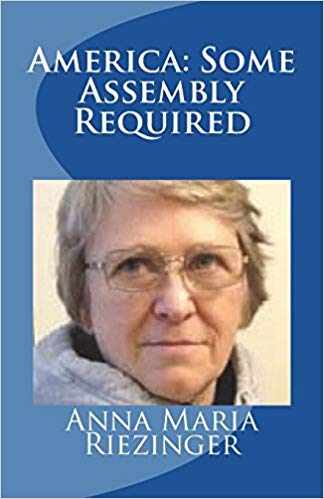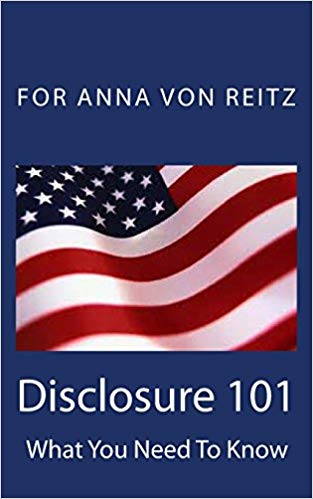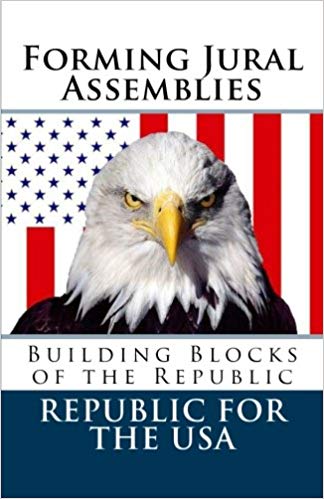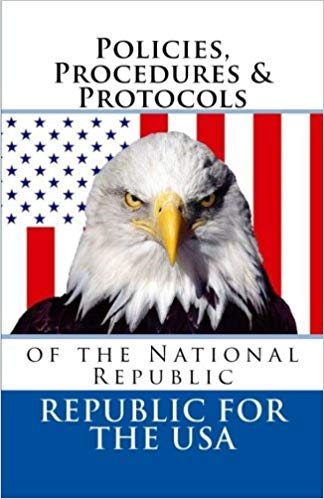The First Pandemic: How foreclosure courts helped big banks screw over homeownersThe foreclosure lawyers down in Jacksonville had warned me, but I was skeptical. They told me the state of Florida had created a special super-high-speed housing court with a specific mandate to rubber-stamp the legally dicey foreclosures by corporate mortgage pushers like Deutsche Bank and JP Morgan Chase. This “rocket docket,” as it is called in town, is presided over by retired judges who seem to have no clue about the insanely complex financial instruments they are ruling on — securitized mortgages and labyrinthine derivative deals of a type that didn’t even exist when most of them were active members of the bench. Their stated mission isn’t to decide right and wrong, but to clear cases and blast human beings out of their homes with ultimate velocity. They certainly have no incentive to penetrate the profound criminal mysteries of the great American mortgage bubble of the 2000s, perhaps the most complex Ponzi scheme in human history — an epic mountain range of corporate fraud in which Wall Street megabanks conspired first to collect huge numbers of subprime mortgages, then to unload them on unsuspecting third parties like pensions, trade unions and insurance companies (and, ultimately, you and me, as taxpayers) in the guise of AAA-rated investments. Selling lead as gold, shit as Chanel No. 5, was the essence of the booming international fraud scheme that created most all of these now-failing home mortgages. Looting Main Street The rocket docket wasn’t created to investigate any of that. It exists to launder the crime and bury the evidence by speeding thousands of fraudulent and predatory loans to the ends of their life cycles, so that the houses attached to them can be sold again with clean paperwork. The judges, in fact, openly admit that their primary mission is not justice but speed. One Jacksonville judge, the Honorable A.C. Soud, even told a local newspaper that his goal is to resolve 25 cases per hour. Given the way the system is rigged, that means His Honor could well be throwing one ass on the street every 2.4 minutes. Foreclosure lawyers told me one other thing about the rocket docket. The hearings, they said, aren’t exactly public. “The judges might give you a hard time about watching,” one lawyer warned. “They’re not exactly anxious for people to know about this stuff.” Inwardly, I laughed at this — it sounded like typical activist paranoia. The notion that a judge would try to prevent any citizen, much less a member of the media, from watching an open civil hearing sounded ridiculous. F-up as everyone knows the state of Florida is, it couldn’t be that bad. It isn’t Indonesia. Right?  Illustration by Victor Juhasz By Matt Taibbi Well, not quite. When I went to sit in on Judge Soud’s courtroom in downtown Jacksonville, I was treated to an intimate, and at times breathtaking, education in the horror of the foreclosure crisis, which is rapidly emerging as the even scarier sequel to the financial meltdown of 2008: Invasion of the Home Snatchers II. In Las Vegas, one in 25 homes is now in foreclosure. In Fort Myers, Florida, one in 35. In September, lenders nationwide took over a record 102,134 properties; that same month, more than a third of all home sales were distressed properties. All told, some 820,000 Americans have already lost their homes this year, and another 1 million currently face foreclosure. Matt Taibbi: The Crying Shame of John Boehner Throughout the mounting catastrophe, however, many Americans have been slow to comprehend the true nature of the mortgage disaster. They seemed to have grasped just two things about the crisis: One, a lot of people are getting their houses foreclosed on. Two, some of the banks doing the foreclosing seem to have misplaced their paperwork. For most people, the former bit about homeowners not paying their damn bills is the important part, while the latter, about the sudden and strange inability of the world’s biggest and wealthiest banks to keep proper records, is incidental. Just a little office sloppiness, and who cares? Those deadbeat homeowners still owe the money, right? “They had it coming to them,” is how a bartender at the Jacksonville airport put it to me. But in reality, it’s the unpaid bills that are incidental and the lost paperwork that matters. It turns out that underneath that little iceberg tip of exposed evidence lies a fraud so gigantic that it literally cannot be contemplated by our leaders, for fear of admitting that our entire financial system is corrupted to its core — with our great banks and even our government coffers backed not by real wealth but by vast landfills of deceptively generated and essentially worthless mortgage-backed assets. You’ve heard of Too Big to Fail — the foreclosure crisis is Too Big for Fraud. Think of the Bernie Madoff scam, only replicated tens of thousands of times over, infecting every corner of the financial universe. The underlying crime is so pervasive, we simply can’t admit to it — and so we are working feverishly to rubber-stamp the problem away, in sordid little backrooms in cities like Jacksonville, behind doors that shouldn’t be, but often are, closed. And that’s just the economic side of the story. The moral angle to the foreclosure crisis — and, of course, in capitalism we’re not supposed to be concerned with the moral stuff, but let’s mention it anyway — shows a culture that is slowly giving in to a futuristic nightmare ideology of computerized greed and unchecked financial violence. The monster in the foreclosure crisis has no face and no brain. The mortgages that are being foreclosed upon have no real owners. The lawyers bringing the cases to evict the humans have no real clients. It is complete and absolute legal and economic chaos. No single limb of this vast man-eating thing knows what the other is doing, which makes it nearly impossible to combat — and scary as hell to watch. What follows is an account of a single hour of Judge A.C. Soud’s rocket docket in Jacksonville. Like everything else related to the modern economy, these foreclosure hearings are conducted in what is essentially a foreign language, heavy on jargon and impenetrable to the casual observer. It took days of interviews with experts before and after this hearing to make sense of this single hour of courtroom drama. And though the permutations of small-time scammery and grift in the foreclosure world are virtually endless — your average foreclosure case involves homeowners or investors being screwed at least five or six creative ways — a single hour of court and a few cases is enough to tell the main story. Because if you see one of these scams, you see them all. It’s early on a sunny Tuesday morning when I arrive at the chambers of Judge Soud, one of four rotating judges who preside over the local rocket docket. These special foreclosure courts were established in July of this year, after the state of Florida budgeted $9.6 million to create a new court with a specific mandate to clear 62 percent of the foreclosure cases that were clogging up the system. Rather than forcing active judges to hear thousands of individual cases, this strategy relies on retired judges who take turns churning through dozens of cases every morning, with little time to pay much attention to the particulars. What passes for a foreclosure court in Jacksonville is actually a small conference room at the end of a hall on the fifth floor of the drab brick Duval County Courthouse. The space would just about fit a fridge and a pingpong table. At the head of a modest conference table this morning sits Judge Soud, a small and fussy-looking man who reminds me vaguely of the actor Ben Gazzara. On one side of the table sits James Kowalski, a former homicide prosecutor who is now defending homeowners. A stern man with a shaved head and a laconic manner of speaking, Kowalski has helped pioneer a whole new approach to the housing mess, slowing down the mindless eviction machine by deposing the scores of “robo-signers” being hired by the banks to sign phony foreclosure affidavits by the thousands. For his work on behalf of the dispossessed, Kowalski was recently profiled in a preposterous Wall Street Journal article that blamed attorneys like him for causing the foreclosure mess with their nuisance defense claims. The headline: “Niche Lawyers Spawned Housing Fracas.” On the other side of the table are the plaintiff’s attorneys, the guys who represent the banks. On this level of the game, these lawyers refer to themselves as “bench warmers” — volume stand-ins subcontracted by the big, hired-killer law firms that work for the banks. One of the bench warmers present today is Mark Kessler, who works for a number of lenders and giant “foreclosure mills,” including the one run by David J. Stern, a gazillionaire attorney and all-Universe asshole who last year tried to foreclose on 70,382 homeowners. Which is a nice way to make a living, considering that Stern and his wife, Jeanine, have bought nearly $60 million in property for themselves in recent years, including a 9,273-square-foot manse in Fort Lauderdale that is part of a Ritz-Carlton complex. Kessler is a harried, middle-aged man in glasses who spends the morning perpetually fighting to organize a towering stack of folders, each one representing a soon-to-be-homeless human being. It quickly becomes apparent that Kessler is barely acquainted with the names in the files, much less the details of each case. “A lot of these guys won’t even get the folders until right before the hearing,” says Kowalski. When I arrive, Judge Soud and the lawyers are already arguing a foreclosure case; at a break in the action, I slip into the chamber with a legal-aid attorney who’s accompanying me and sit down. The judge eyes me anxiously, then proceeds. He clears his throat, and then it’s ready, set, fraud! Judge Soud seems to have no clue that the files he is processing at a breakneck pace are stuffed with fraudulent claims and outright lies. “We have not encountered any fraud yet,” he recently told a local newspaper. “If we encountered fraud, it would go to [the state attorney], I can tell you that.” But the very first case I see in his court is riddled with fraud. Kowalski has seen hundreds of cases like the one he’s presenting this morning. It started back in 2006, when he went to Pennsylvania to conduct what he thought would be a routine deposition of an official at the lending giant GMAC. What he discovered was that the official — who had sworn to having personal knowledge of the case — was, in fact, just a “robo-signer” who had signed off on the file without knowing anything about the actual homeowner or his payment history. (Kowalski’s clients, like most of the homeowners he represents, were actually making their payments on time; in this particular case, a check had been mistakenly refused by GMAC.) Following the evidence, Kowalski discovered what has turned out to be a systemwide collapse of the process for documenting mortgages in this country. If you’re foreclosing on somebody’s house, you are required by law to have a collection of paperwork showing the journey of that mortgage note from the moment of issuance to the present. You should see the originating lender (a firm like Countrywide) selling the loan to the next entity in the chain (perhaps Goldman Sachs) to the next (maybe JP Morgan), with the actual note being transferred each time. But in fact, almost no bank currently foreclosing on homeowners has a reliable record of who owns the loan; in some cases, they have even intentionally shredded the actual mortgage notes. That’s where the robo-signers come in. To create the appearance of paperwork where none exists, the banks drag in these pimply entry-level types — an infamous example is GMAC’s notorious robo-signer Jeffrey Stephan, who appears online looking like an age-advanced photo of Beavis or Butt-Head — and get them to sign thousands of documents a month attesting to the banks’ proper ownership of the mortgages. This isn’t some rare goof-up by a low-level cubicle slave: Virtually every case of foreclosure in this country involves some form of screwed-up paperwork. “I would say it’s pretty close to 100 percent,” says Kowalski. An attorney for Jacksonville Area Legal Aid tells me that out of the hundreds of cases she has handled, fewer than five involved no phony paperwork. “The fraud is the norm,” she says. Kowalski’s current case before Judge Soud is a perfect example. The Jacksonville couple he represents are being sued for delinquent payments, but the case against them has already been dismissed once before. The first time around, the plaintiff, Bank of New York Mellon, wrote in Paragraph 8 that “plaintiff owns and holds the note” on the house belonging to the couple. But in Paragraph 3 of the same complaint, the bank reported that the note was “lost or destroyed,” while in Paragraph 4 it attests that “plaintiff cannot reasonably obtain possession of the promissory note because its whereabouts cannot be determined.” The bank, in other words, tried to claim on paper, in court, that it both lost the note and had it, at the same time. Moreover, it claimed that it had included a copy of the note in the file, which it did — the only problem being that the note (a) was not properly endorsed, and (b) was payable not to Bank of New York but to someone else, a company called Novastar. Now, months after its first pass at foreclosure was dismissed, the bank has refiled the case — and what do you know, it suddenly found the note. And this time, somehow, the note has the proper stamps. “There’s a stamp that did not appear on the note that was originally filed,” Kowalski tells the judge. (This business about the stamps is hilarious. “You can get them very cheap online,” says Chip Parker, an attorney who defends homeowners in Jacksonville.) The bank’s new set of papers also traces ownership of the loan from the original lender, Novastar, to JP Morgan and then to Bank of New York. The bank, in other words, is trying to push through a completely new set of documents in its attempts to foreclose on Kowalski’s clients. There’s only one problem: The dates of the transfers are completely fucked. According to the documents, JP Morgan transferred the mortgage to Bank of New York on December 9th, 2008. But according to the same documents, JP Morgan didn’t even receive the mortgage from Novastar until February 2nd, 2009 — two months after it had supposedly passed the note along to Bank of New York. Such rank incompetence at doctoring legal paperwork is typical of foreclosure actions, where the fraud is laid out in ink in ways that make it impossible for anyone but an overburdened, half-asleep judge to miss. “That’s my point about all of this,” Kowalski tells me later. “If you’re going to lie to me, at least lie well.” The dates aren’t the only thing screwy about the new documents submitted by Bank of New York. Having failed in its earlier attempt to claim that it actually had the mortgage note, the bank now tries an all-of-the-above tactic. “Plaintiff owns and holds the note,” it claims, “or is a person entitled to enforce the note.” Soud sighs. For Kessler, the plaintiff’s lawyer, to come before him with such sloppy documents and make this preposterous argument — that his client either is or is not the note-holder — well, that puts His Honor in a tough spot. The entire concept is a legal absurdity, and he can’t sign off on it. With an expression of something very like regret, the judge tells Kessler, “I’m going to have to go ahead and accept [Kowalski’s] argument.” Now, one might think that after a bank makes multiple attempts to push phony documents through a courtroom, a judge might be pissed off enough to simply rule against that plaintiff for good. As I witness in court all morning, the defense never gets more than one chance to screw up. But the banks get to keep filing their foreclosures over and over again, no matter how atrocious and deceitful their paperwork is. Thus, when Soud tells Kessler that he’s dismissing the case, he hastens to add: “Of course, I’m not going to dismiss with prejudice.” With an emphasis on the words “of course.” Instead, Soud gives Kessler 25 days to come up with better paperwork. Kowalski fully expects the bank to come back with new documents telling a whole new story of the note’s ownership. “What they’re going to do, I would predict, is produce a note and say Bank of New York is not the original note-holder, but merely the servicer,” he says. This is the dirty secret of the rocket docket: The whole system is set up to enable lenders to commit fraud over and over again, until they figure out a way to reduce the stink enough so some judge like Soud can sign off on the scam. “If the court finds for the defendant, the plaintiffs just refile,” says Parker, the local attorney. “The only way for the caseload to get reduced is to give it to the plaintiff. The entire process is designed with that result in mind.” Now all of this — the obviously cooked-up documents, the magically appearing stamp and the rest of it — may just seem like nothing more than sloppy paperwork. After all, what does it matter if the bank has lost a few forms or mixed up the dates? The homeowners still owe what they owe, and the deadbeats have no right to keep living in a house they haven’t paid for. But what’s going on at the Jacksonville rocket docket, and in foreclosure courts all across the country, has nothing to do with sloppiness. All this phony paperwork was actually an essential part of the mortgage bubble, an integral element of what has enabled the nation’s biggest lenders to pass off all that subprime lead as AAA gold. In the old days, when you took out a mortgage, it was probably through a local bank or a credit union, and whoever gave you your loan held on to it for life. If you lost your job or got too sick to work and suddenly had trouble making your payments, you could call a human being and work things out. It was in the banker’s interest, as well as yours, to make a modified payment schedule. From his point of view, it was better that you pay something than nothing at all. But that all changed about a decade ago, thanks to the invention of new financial instruments that magically turned all these mortgages into high-grade investments. Now when you took out a mortgage, your original lender — which might well have been a big mortgage mill like Countrywide or New Century — immediately sold off your loan to big banks like Deutsche and Goldman and JP Morgan. The banks then dumped hundreds or thousands of home loans at a time into tax-exempt real estate trusts, where the loans were diced up into securities, examined and graded by the ratings agencies, and sold off to big pension funds and other institutional suckers. Even at this stage of the game, the banks generally knew that the loans they were buying and reselling to investors were shady. A company called Clayton Holdings, which analyzed nearly 1 million loans being prepared for sale in 2006 and 2007 by 23 banks, found that nearly half of the mortgages failed to meet the underwriting standards being promised to investors. Citigroup, for instance, had 29 percent of its loans come up short, but it still sold a third of those mortgages to investors. Goldman Sachs had 19 percent of its mortgages flunk the test, yet it knowingly hawked 34 percent of the risky deals to investors. D. Keith Johnson, the head of Clayton Holdings, was so alarmed by the findings that he went to officials at three of the main ratings agencies — Moody’s, Standard and Poor’s, and Fitch’s — and tried to get them to properly evaluate the loans. “Wouldn’t this information be great for you to have as you assign risk levels?” he asked them. (Translation: Don’t you ratings agencies want to know that half these loans are crap before you give them a thumbs-up?) But all three agencies rejected his advice, fearing they would lose business if they adopted tougher standards. In the end, the agencies gave large chunks of these mortgage-backed securities AAA ratings — which means “credit risk almost zero.” Since these mortgage-backed securities paid much higher returns than other AAA investments like treasury notes or corporate bonds, the banks had no trouble attracting investors, foreign and domestic, from pension funds to insurance companies to trade unions. The demand was so great, in fact, that they often sold mortgages they didn’t even have yet, prompting big warehouse lenders like Countrywide and New Century to rush out into the world to find more warm bodies to lend to. In their extreme haste to get thousands and thousands of mortgages they could resell to the banks, the lenders committed an astonishing variety of fraud, from falsifying income statements to making grossly inflated appraisals to misrepresenting properties to home buyers. Most crucially, they gave tons and tons of credit to people who probably didn’t deserve it, and why not? These fly-by-night mortgage companies weren’t going to hold on to these loans, not even for 10 minutes. They were issuing this credit specifically to sell the loans off to the big banks right away, in furtherance of the larger scheme to dump fraudulent AAA-rated mortgage-backed securities on investors. If you had a pulse, they had a house to sell you. As bad as Countrywide and all those lenders were, the banks that had sent them out to collect these crap loans were a hundred times worse. To sell the loans, the banks often dumped them into big tax-exempt buckets called REMICs, or Real Estate Mortgage Investment Conduits. Each one of these Enron-ish, offshore-like real estate trusts spelled out exactly what kinds of loans were supposed to be in the pool, when they were to be collected, and how they were to be managed. In order to both preserve their tax-exempt status and deserve their AAA ratings, each of the loans in the pool had to have certain characteristics. The loans couldn’t already be in default or foreclosure at the time they were sold to investors. If they were advertised as nice, safe, fixed-rate mortgages, they couldn’t turn out to be high-interest junk loans. And, on the most basic level, the loans had to actually exist. In other words, if the trust stipulated that all the loans had to be collected by August 2005, the bank couldn’t still be sticking in mortgages months later. Yet that’s exactly what the banks did. In one case handled by Jacksonville Area Legal Aid, a homeowner refinanced her house in 2005 but almost immediately got into trouble, going into default in December of that year. Yet somehow, this woman’s loan was placed into a trust called Home Equity Loan Trust Series AE 2005-HE5 in January 2006 — five months after the deadline for that particular trust. The loan was not only late, it was already in foreclosure — which means that, by definition, whoever the investors were in AE 2005-HE5 were getting shafted. Why does stuff like this matter? Because when the banks put these pools together, they were telling their investors that they were putting their money into tidy collections of real, performing home loans. But frequently, the loans in the trust were complete shit. Or sometimes, the banks didn’t even have all the loans they said they had. But the banks sold the securities based on these pools of mortgages as AAA-rated gold anyway. In short, all of this was a scam — and that’s why so many of these mortgages lack a true paper trail. Had these transfers been done legally, the actual mortgage note and detailed information about all of these transactions would have been passed from entity to entity each time the mortgage was sold. But in actual practice, the banks were often committing securities fraud (because many of the mortgages did not match the information in the prospectuses given to investors) and tax fraud (because the way the mortgages were collected and serviced often violated the strict procedures governing such investments). Having unloaded this diseased cargo onto their unsuspecting customers, the banks had no incentive to waste money keeping “proper” documentation of all these dubious transactions. “You’ve already committed fraud once,” says April Charney, an attorney with Jacksonville Area Legal Aid. “What do you have to lose?” Sitting in the rocket docket, James Kowalski considers himself lucky to have won his first motion of the morning. To get the usually intractable Judge Soud to forestall a foreclosure is considered a real victory, and I later hear Kowalski getting props and attaboys from other foreclosure lawyers. In a great deal of these cases, in fact, the homeowners would have a pretty good chance of beating the rap, at least temporarily, if only they had lawyers fighting for them in court. But most of them don’t. In fact, more than 90 percent of the cases that go through Florida foreclosure courts are unopposed. Either homeowners don’t know they can fight their foreclosures, or they simply can’t afford an attorney. These unopposed cases are the ones the banks know they’ll win — which is why they don’t sweat it if they take the occasional whipping. That’s why all these colorful descriptions of cases where foreclosure lawyers like Kowalski score in court are really just that — a little color. The meat of the foreclosure crisis is the unopposed cases; that’s where the banks make their money. They almost always win those cases, no matter what’s in the files. This becomes evident after Kowalski leaves the room. “Who’s next?” Judge Soud says. He turns to Mark Kessler, the counsel for the big foreclosure mills. “Mark, you still got some?” “I’ve got about three more, Judge,” says Kessler. Kessler then drops three greenish-brown files in front of Judge Soud, who spends no more than a minute or two glancing through each one. Then he closes the files and puts an end to the process by putting his official stamp on each foreclosure with an authoritative finality: Each one of those kerchunks means another family on the street. There are no faces involved here, just beat-the-clock legal machinery. Watching Judge Soud plow through each foreclosure reminds me of the scene in Fargo where the villain played by Swedish character actor Peter Stormare pushes his victim’s leg through a wood chipper with that trademark bored look on his face. Mechanized misery and brainless bureaucracy on the one hand, cash for the banks on the other. What’s sad is that most Americans who have an opinion about the foreclosure crisis don’t give a shit about all the fraud involved. They don’t care that these mortgages wouldn’t have been available in the first place if the banks hadn’t found a way to sell oregano as weed to pension funds and insurance companies. They don’t care that the Countrywides of the world pushed borrowers who qualified for safer fixed-income loans into far more dangerous adjustable-rate loans, because their brokers got bigger commissions for doing so. They don’t care that in the rush to produce loans, people were sold houses that turned out to have flood damage or worse, and they certainly don’t care that people were sold houses with inflated appraisals, which left them almost immediately underwater once housing prices started falling. The way the banks tell it, it doesn’t matter if they defrauded homeowners and investors and taxpayers alike to get these loans. All that matters is that a bunch of deadbeats aren’t paying their fucking bills. “If you didn’t pay your mortgage, you shouldn’t be in your house — period,” is how Walter Todd, portfolio manager at Greenwood Capital Associates, puts it. “People are getting upset about something that’s just procedural.” Jamie Dimon, the CEO of JP Morgan, is even more succinct in dismissing the struggling homeowners that he and the other megabanks scammed before tossing out into the street. “We’re not evicting people who deserve to stay in their house,” Dimon says. There are two things wrong with this argument. (Well, more than two, actually, but let’s just stick to the two big ones.) The first reason is: It simply isn’t true. Many people who are being foreclosed on have actually paid their bills and followed all the instructions laid down by their banks. In some cases, a homeowner contacts the bank to say that he’s having trouble paying his bill, and the bank offers him loan modification. But the bank tells him that in order to qualify for modification, he must first be delinquent on his mortgage. “They actually tell people to stop paying their bills for three months,” says Parker. The authorization gets recorded in what’s known as the bank’s “contact database,” which records every phone call or other communication with a homeowner. But no mention of it is entered into the bank’s “number history,” which records only the payment record. When the number history notes that the homeowner has missed three payments in a row, it has no way of knowing that the homeowner was given permission to stop making payments. “One computer generates a default letter,” says Kowalski. “Another computer contacts the credit bureaus.” At no time is there a human being looking at the entire picture. Which means that homeowners can be foreclosed on for all sorts of faulty reasons: misplaced checks, address errors, you name it. This inability of one limb of the foreclosure beast to know what the other limb is doing is responsible for many of the horrific stories befalling homeowners across the country. Patti Parker, a local attorney in Jacksonville, tells of a woman whose home was seized by Deutsche Bank two days before Christmas. Months later, Deutsche came back and admitted that they had made a mistake: They had repossessed the wrong property. In another case that made headlines in Orlando, an agent for JP Morgan mistakenly broke into a woman’s house that wasn’t even in foreclosure and tried to change the locks. Terrified, the woman locked herself in her bathroom and called 911. But in a profound expression of the state’s reflexive willingness to side with the bad guys, the police made no arrest in the case. Breaking and entering is not a crime, apparently, when it’s authorized by a bank. The second reason the whole they still owe the fucking money thing is bogus has to do with the changed incentives in the mortgage game. In many cases, banks like JP Morgan are merely the servicers of all these home loans, charged with collecting your money every month and paying every penny of it into the trust, which is the real owner of your mortgage. If you pay less than the whole amount, JP Morgan is now obligated to pay the trust the remainder out of its own pocket. When you fall behind, your bank falls behind, too. The only way it gets off the hook is if the house is foreclosed on and sold. That’s what this foreclosure crisis is all about: fleeing the scene of the crime. Add into the equation the fact that some of these big banks were simultaneously betting big money against these mortgages — Goldman Sachs being the prime example — and you can see that there were heavy incentives across the board to push anyone in trouble over the cliff. Things used to be different. Asked what percentage of struggling homeowners she used to be able to save from foreclosure in the days before securitization, Charney is quick to answer. “Most of them,” she says. “I seldom came across a mortgage I couldn’t work out.” In Judge Soud’s court, I come across a shining example of this mindless rush to foreclosure when I meet Natasha Leonard, a single mother who bought a house in 2004 for $97,500. Right after closing on the home, Leonard lost her job. But when she tried to get a modification on the loan, the bank’s offer was not helpful. “They wanted me to pay $1,000,” she says. Which wasn’t exactly the kind of modification she was hoping for, given that her original monthly payment was $840. “You’re paying $840, you ask for a break, and they ask you to pay $1,000?” I ask. “Right,” she says. Leonard now has a job and could make some kind of reduced payment. But instead of offering loan modification, the bank’s lawyers are in their fourth year of doggedly beating her brains out over minor technicalities in the foreclosure process. That’s fine by the lawyers, who are collecting big fees. And there appears to be no human being at the bank who’s involved enough to issue a sane decision to end the costly battle. “If there was a real client on the other side, maybe they could work something out,” says Charney, who is representing Leonard. In this lunatic bureaucratic jungle of securitized home loans issued by transnational behemoths, the borrower-lender relationship can only go one of two ways: full payment, or total war. The extreme randomness of the system is exemplified by the last case I see in the rocket docket. While most foreclosures are unopposed, with homeowners not even bothering to show up in court to defend themselves, a few pro se defendants — people representing themselves — occasionally trickle in. At one point during Judge Soud’s proceeding, a tallish blond woman named Shawnetta Cooper walks in with a confused look on her face. A recent divorcee delinquent in her payments, she has come to court today fully expecting to be foreclosed on by Wells Fargo. She sits down and takes a quick look around at the lawyers who are here to kick her out of her home. “The land has been in my family for four generations,” she tells me later. “I don’t want to be the one to lose it.” Judge Soud pipes up and inquires if there’s a plaintiff lawyer present; someone has to lop off this woman’s head so the court can move on to the next case. But then something unexpected happens: It turns out that Kessler is supposed to be foreclosing on her today, but he doesn’t have her folder. The plaintiff, technically, has forgotten to show up to court. Just minutes before, I had watched what happens when defendants don’t show up in court: kerchunk! The judge more or less automatically rules for the plaintiffs when the homeowner is a no-show. But when the plaintiff doesn’t show, the judge is suddenly all mercy and forgiveness. Soud simply continues Cooper’s case, telling Kessler to get his shit together and come back for another whack at her in a few weeks. Having done this, he dismisses everyone. Stunned, Cooper wanders out of the courtroom looking like a person who has stepped up to the gallows expecting to be hanged, but has instead been handed a fruit basket and a new set of golf clubs. I follow her out of the court, hoping to ask her about her case. But the sight of a journalist getting up to talk to a defendant in his kangaroo court clearly puts a charge into His Honor, and he immediately calls Cooper back into the conference room. Then, to the amazement of everyone present, he issues the following speech: “This young man,” he says, pointing at me, “is a reporter for Rolling Stone. It is your privilege to talk to him if you want.” He pauses. “It is also your privilege to not talk to him if you want.” I stare at the judge, open-mouthed. Here’s a woman who still has to come back to this guy’s court to find out if she can keep her home, and the judge’s admonition suggests that she may run the risk of pissing him off if she talks to a reporter. Worse, about an hour later, April Charney, the lawyer who accompanied me to court, receives an e-mail from the judge actually threatening her with contempt for bringing a stranger to his court. Noting that “we ask that anyone other than a lawyer remain in the lobby,” Judge Soud admonishes Charney that “your unprofessional conduct and apparent authorization that the reporter could pursue a property owner immediately out of Chambers into the hallway for an interview, may very well be sited [sic] for possible contempt in the future.” Let’s leave aside for a moment that Charney never said a word to me about speaking to Cooper. And let’s overlook entirely the fact that the judge can’t spell the word cited. The key here isn’t this individual judge — it’s the notion that these hearings are not and should not be entirely public. Quite clearly, foreclosure is meant to be neither seen nor heard. After Soud’s outburst, Cooper quietly leaves the court. Once out of sight of the judge, she shows me her file. It’s not hard to find the fraud in the case. For starters, the assignment of mortgage is autographed by a notorious robo-signer — John Kennerty, who gave a deposition this summer admitting that he signed as many as 150 documents a day for Wells Fargo. In Cooper’s case, the document with Kennerty’s signature on it places the date on which Wells Fargo obtained the mortgage as May 5th, 2010. The trouble is, the bank bought the loan from Wachovia — a bank that went out of business in 2008. All of which is interesting, because in her file, it states that Wells Fargo sued Cooper for foreclosure on February 22nd, 2010. In other words, the bank foreclosed on Cooper three months before it obtained her mortgage from a nonexistent company. There are other types of grift and outright theft in the file. As is typical in many foreclosure cases, Cooper is being charged by the bank for numerous attempts to serve her with papers. But a booming industry has grown up around fraudulent process servers; companies will claim they made dozens of attempts to serve homeowners, when in fact they made just one or none at all. Who’s going to check? The process servers cover up the crime using the same tactic as the lenders, saying they lost the original summons. From 2000 to 2006, there was a total of 1,031 “affidavits of lost summons” here in Duval County; in the past two years, by contrast, more than 4,000 have been filed. Cooper’s file contains a total of $371 in fees for process service, including one charge of $55 for an attempt to serve process on an “unknown tenant.” But Cooper’s house is owner-occupied — she doesn’t even have a tenant, she tells me with a shrug. If Mark Kessler had had his shit together in court today, Cooper would not only be out on the street, she’d be paying for that attempt to serve papers to her nonexistent tenant. Cooper’s case perfectly summarizes what the foreclosure crisis is all about. Her original loan was made by Wachovia, a bank that blew itself up in 2008 speculating in the mortgage market. It was then transferred to Wells Fargo, a megabank that was handed some $50 billion in public assistance to help it acquire the corpse of Wachovia. And who else benefited from that $50 billion in bailout money? Billionaire Warren Buffett and his Berkshire Hathaway fund, which happens to be a major shareholder in Wells Fargo. It was Buffett’s vice chairman, Charles Munger, who recently told America that it should “thank God” that the government bailed out banks like the one he invests in, while people who have fallen on hard times — that is, homeowners like Shawnetta Cooper — should “suck it in and cope.” Look: It’s undeniable that many of the people facing foreclosure bear some responsibility for the crisis. Some borrowed beyond their means. Some even borrowed knowing they would never be able to pay off their debt, either hoping to flip their houses right away or taking on mortgages with low initial teaser rates without bothering to think of the future. The culture of take-for-yourself-now, let-someone-else-pay-later wasn’t completely restricted to Wall Street. It penetrated all the way down to the individual consumer, who in some cases was a knowing accomplice in the bubble mess. But many of these homeowners are just ordinary Joes who had no idea what they were getting into. Some were pushed into dangerous loans when they qualified for safe ones. Others were told not to worry about future jumps in interest rates because they could just refinance down the road, or discovered that the value of their homes had been overinflated by brokers looking to pad their commissions. And that’s not even accounting for the fact that most of this credit wouldn’t have been available in the first place without the Ponzi-like bubble scheme cooked up by Wall Street, about which the average homeowner knew nothing — hell, even the average U.S. senator didn’t know about it. At worst, these ordinary homeowners were stupid or uninformed — while the banks that lent them the money are guilty of committing a baldfaced crime on a grand scale. These banks robbed investors and conned homeowners, blew themselves up chasing the fraud, then begged the taxpayers to bail them out. And bail them out we did: We ponied up billions to help Wells Fargo buy Wachovia, paid Bank of America to buy Merrill Lynch, and watched as the Fed opened up special facilities to buy up the assets in defective mortgage trusts at inflated prices. And after all that effort by the state to buy back these phony assets so the thieves could all stay in business and keep their bonuses, what did the banks do? They put their foot on the foreclosure gas pedal and stepped up the effort to kick people out of their homes as fast as possible, before the world caught on to how these loans were made in the first place. Why don’t the banks want us to see the paperwork on all these mortgages? Because the documents represent a death sentence for them. According to the rules of the mortgage trusts, a lender like Bank of America, which controls all the Countrywide loans, is required by law to buy back from investors every faulty loan the crooks at Countrywide ever issued. Think about what that would do to Bank of America’s bottom line the next time you wonder why they’re trying so hard to rush these loans into someone else’s hands. When you meet people who are losing their homes in this foreclosure crisis, they almost all have the same look of deep shame and anguish. Nowhere else on the planet is it such a crime to be down on your luck, even if you were put there by some of the world’s richest banks, which continue to rake in record profits purely because they got a big fat handout from the government. That’s why one banker CEO after another keeps going on TV to explain that despite their own deceptive loans and fraudulent paperwork, the real problem is these deadbeat homeowners who won’t pay their F-ing bills. And that’s why most people in this country are so ready to buy that explanation. Because in America, it’s far more shameful to owe money than it is to steal it. Source: Rollingstone.com/This article appeared in the November 25, 2010 issue of Rolling Stone. The issue is available in the online archive. MORTGAGE FORECLOSURE / LAND GRAB SOLUTIONS
0 Comments
Tucker/Putin Shock The World! + Biden Implodes Addressing The Nation!! 25th Amendment NOW!!!!2/9/2024
Tucker Carlson broke the internet and liberals by interviewing Putin from Russia on his site and X last night. We will have LOTS of commentary about this two hour long interview. Also, the investigation is complete in Joe Biden's handling of classified documents and just like we expected....No charges! BUT, The reason was due to Biden being an "elderly" man with no memory. Biden addressed the Nation to defend himself and ended up making things worse by mixing up Mexico and Egypt!
Follow us on IG and X: @Grahamallen1 @toddspears1776 @mex_i_cantony https://rumble.com/c/GrahamAllenOfficial 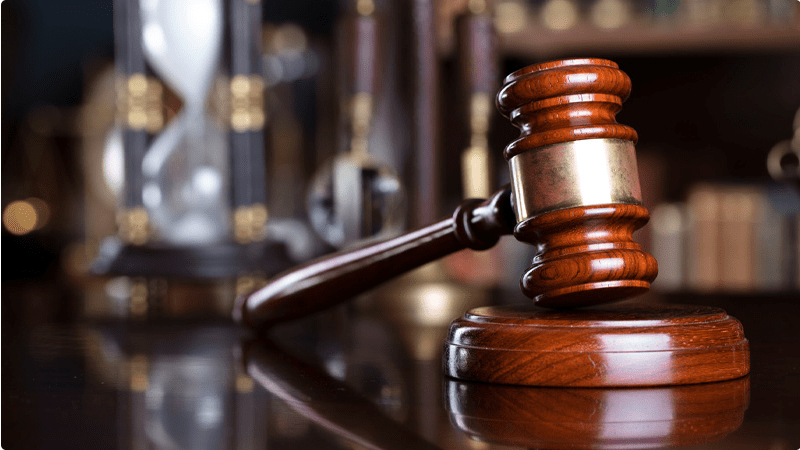
Did you know that there are 12 presumptions against you when you enter any court in the united States? These are devastating to you unless you challenged them. Ron Gibson, a lawyer for more than 50 years, joins me to explain these presumptions and why you must argue against them. He’ll also explain the difference between having a lawyer and having an attorney.
**Please excuse the “ticking” sound when Ron is speaking. It appears it has something to do with his speakers. The information is vital for you to learn and know.
https://rumble.com/embed/v1d3uvr/?pub=4
HOW TO WIN IN COURT LEGAL REMEDIES FAST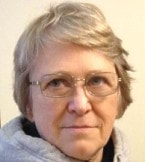 By Anna Von Reitz There is more than enough evidence to prove that whatever hopped-up fire-bombing occurred at Hiroshima and Nagasaki at the end of World War II, it was not a nuclear bomb and not a nuclear disaster. Somehow, perfectly sane people, including physicists, have failed to note the radioactive half-life of the isotopes involved. If the bombs unleashed at Hiroshima or Nagasaki had actually been nuclear bombs, those cities and a large bit of the countryside around them would be dead and uninhabitable as a result of nuclear pollution and that pollution would remain for tens of thousands of years---- like Sodom and Gemorrah, not like Hiroshima and Nagasaki today. There would also be evident vitrification of the soil and subsoil at least two meters down. So, we have another Big Lie to face up to and it's not a matter of "National Security". National Shame and money laundering is more like it. I don't believe in nuclear weapons in the sense that the popular notion of "nuclear explosion" has it, but I do believe in nuclear pollution---and the deadly effects that radioactive isotopes can have on biological systems. Fukushima, the reactor, not a bomb, is creating exactly this horrendous scenario in the Pacific Ocean. Radio-isotopes are very silent, effective, and long-lived biological poisons. That's why the pollution caused by including "spent" nuclear fuel in the payloads of bombs used during recent wars in the Mideast is a war crime against humanity and against the Earth---- a crime against our soldiers and a crime against the civilian populace of the Middle East where this heinous thing was done. That in itself is more than enough reason to summon an International War Crimes Tribunal to Nuremberg. Similarly, it is the pollution potentially caused by a nuclear "dirty bomb" that is implied by the Baby Boomer bombs ---- not just physical explosive destruction which could be caused by any combination of metallic firebomb materials including Thermite, powdered Barium, etc. The advantage to these monsters in the use of dirty bomb technology is that it helps prevent/preclude recovery of surviving records and examination of the bomb site. I hope that those promoting this scheme will now realize that the records will still exist and are still safe no matter what they do to the record repositories in Kansas and Colorado. Also, the important records had already been removed from the Kansas repository, so that tells us right there that someone knew something and that the records had already been cashiered, stolen, or otherwise transported for purposes unknown by persons unknown. A big nasty explosion with radioactive fallout would seal the site and provide an excuse for the theft to remain undetected and provide an excuse to say that the records had been destroyed. Just like 911. The rats are not having a good week. And I personally hope it gets even hotter for them. ---------------------------- See this article and over 2200 others on Anna's website here: www.annavonreitz.com Restoring Lawful Government |
New Human
New Earth Communities Solutions - Actions - Remedies 
Monthly Support Option
Unsubscribe at Anytime One Time Tip
You Choose the Amount The American States Assemblies
|
- New Human New Earth Communities
- Member Q & A Contact
- Reader Supported Truth
- NHNEC Shoppe
- Follow Us On Wordpress
- Natural Law Trust Protect Your Assets
- VITALITY HEALTH & LEGAL FUNDING
- How To Win In Court
- Solutions, Actions, Remedies
- Anna von Reitz-Restoring Lawful Government
- The American States Assemblies
- Private Registered Bond
- Mortgage Foreclosure Solutions
- Awake Great Reset Tools
- Un Agenda 21 + 2030 + 2050
- Updates Unveiling The Agendas
- What Was Hidden is Revealed
- Awake Medical Community
- AWAKE SELF CARE
- End the Fraud
- Peggy Hall - The Healthy American
- Mark Emery - Exit Babylon - Lighthouse Law Club
- 5G - Cell Tower Microwave Weapons
- REAL SHUNGITE EMF - 5G Protection
- SMART METER COVERS & EMF PROTECTION DEVICES
- The AI Organization
- Aliens Among Us
- Energetic Parasite Removal Aids
- Manna World Holding Trust Report
- CESTUI QUE VIE ACT 1666 – EXISTENCE OF LIFE
- Alternative Media
- Declaration of Freedom for All
- Blog Roll
- Unlawful Mask & Vaccine Mandates
- Way Maker - Worship
- The Earth Constitution Institute
- Preparedness Resources
- Food Security
- Control Your Data
- CRITICAL THINKER ACADEMY
- Earth Energy - God's Creation

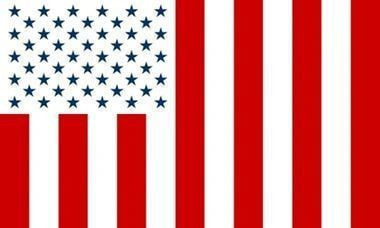


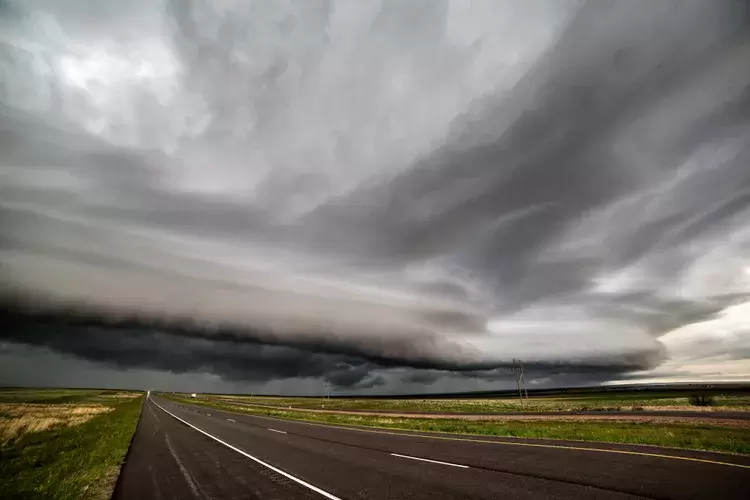
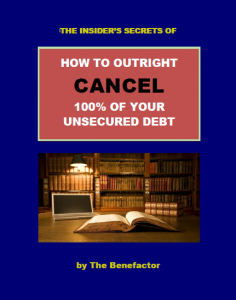
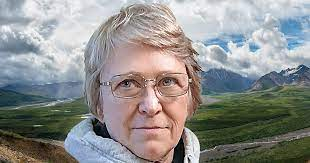
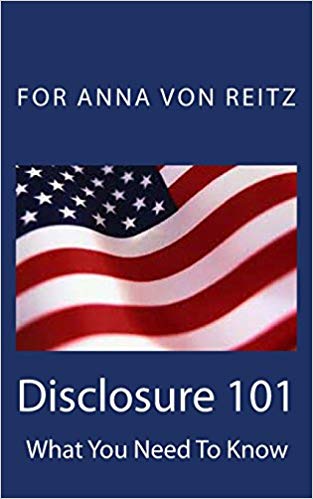

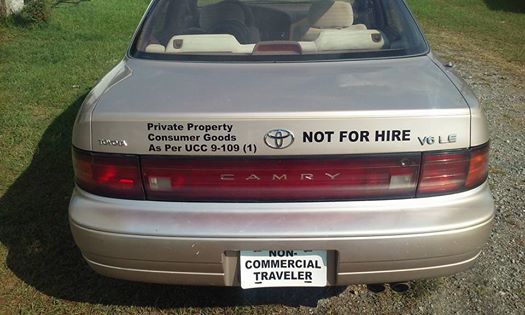
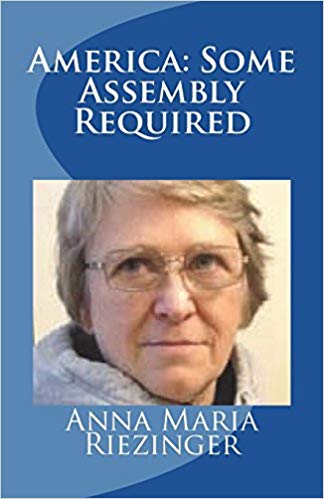
 RSS Feed
RSS Feed

